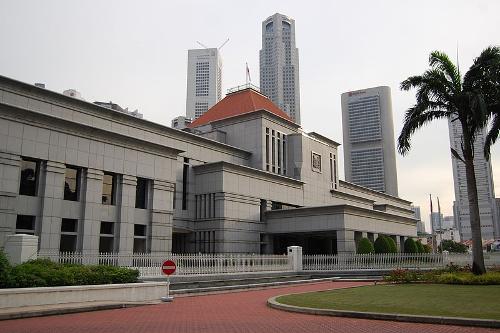SINGAPORE
Society

Society
Society
State structure
 Singapore Parliament BuildingPhoto: Edwin Lee CC 2.0 Generic no changes made
Singapore Parliament BuildingPhoto: Edwin Lee CC 2.0 Generic no changes made
Singapore is a parliamentary republic with a president elected by the people as head of state. The president is elected for a term of six years. He is a powerful man because he can, among other things, disapprove government budgets and appoint top officials. The Board of Presidential Advisors is appointed to provide advice and recommendations to the President. The presidential council consists of 21 members, who ensure that the legislation does not discriminate between the different population groups.
The cabinet is headed by the Prime Minister, who is chosen by the President from among the members of Parliament. Ministers are appointed by the President on the advice of the Prime Minister and are also selected from among the members of Parliament.
The parliament consists of a single chamber of 83 members who are elected every five years through the district electoral system. All minority groups must be represented in parliament. There are also six appointed members who are expected to provide independent views on the country's problems and issues. They are appointed by the president for a term of two years. Everyone aged 21 and older is required to vote. For the current political situation see chapter history.
Education
All schools in Singapore, be they government or mission schools, accept children of all races and religions. The schools that teach in English are the most popular. However, as Singapore is a multicultural society, it is mandatory to learn a second language, Malay, Chinese or Tamil.
 School of arts, SingaporePhoto: Snhaetnhlaonncg CC 3.0 Unported no changes made
School of arts, SingaporePhoto: Snhaetnhlaonncg CC 3.0 Unported no changes made
Primary education is free but not compulsory. And it can take six or eight years, depending on the abilities of the student. In the first years, the emphasis is strongly on learning the languages and on arithmetic. Children who cannot handle it go to classes where only one language is taught. Due to the large numbers of students, there are two sessions per day, one in the morning and one in the afternoon. Students can follow one of the two.
After primary school, you can go to general secondary education. General secondary education lasts four or five years. One can also follow vocational education or industrial and technical courses. Furthermore, there are commercial courses and pre-university courses for students who want to go to universities. Pupils who cannot follow a course due to a lack of money are financially helped by the state, so that everyone has equal opportunities. Much attention is also paid to the moral, social and physical development of the students.
At the end of 1997, there were 196 primary schools, 147 secondary schools, two universities, four polytechnics and 34 technical and commercial training institutes. The International University of Singapore (since 1980) is formed from the University of Singapore (since 1905) and Nanyang University (since 1956). Nanyang Technical University (since 1991) has emerged from Nanyang Technical Institute (since 1981).
Sources
Beliën, H. / Maleisië : Singapore
Gottmer
Hellander, P. / Singapore
Lonely Planet,
Oon, H. / Singapore
Van Reemst
Singapore
Ministry of Information and the Arts
Wee, J. / Singapore
Chelsea House Publishers
CIA - World Factbook
BBC - Country Profiles
Copyright: Team The World of Info